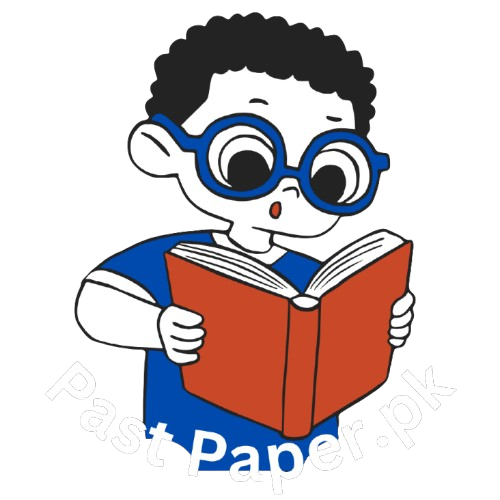CSS International Relations Past Paper 2006
PAPER (Objective) 20 Marks
Multiple choice Questions. (20)
(1) An organization whose members are from national governments is a:
(a) Nongovernmental Organization (NGO)
(b) Intergovernmental Organization (IGO)
(c) World wide Transnational Organization (WTO)
(d) None of these
(2) “The national interest is defined as the acquisition of power”. The speaker is a:
(a) Pluralist
(b) Idealist
(c) Structuralist
(d) None of these
(3) Neoliberals:
(a) Stress the importance of international institutions in reducing conflict in the international system.
(b) Are pessimistic about international cooperation.
(c) Agree with realists that states are unitary actors.
(d) Both (a) and (c)
(e) None of these
(4) The military-industrial complex consists of:
(a) The military, defense contractors, and research institutes.
(b) The military, defense contractors, and the executive branch.
(c) The army, the navy, and the air-force.
(d) None of these
(5) Territorial waters traditionally are recognized to extend how far from a state’s coastline?
(a) 3 miles
(b) 10 miles
(c) 12 miles
(d) None of these
(6) A state’s exclusive economic zone (EEZ) is recognized to extend how far from the coastline?
(a) 3 miles
(b) 10 miles
(c) 12 miles
(d) None of these
(7) States can exclude others from entering which of the following?
(a) 12 miles limit from coastline
(b) Airspace
(c) Orbital space
(d) Both (a) and (b)
(e) None of these
(8) Weapons of mass destruction include:
(a) Nuclear, chemical, and biological weapons
(b) Nuclear, conventional, and biological weapons
(c) Chemical, ballistic, and biological weapons
(d) None of these
(9) Strategic weapons are:
(a) Short-range weapons
(b) Intermediate-range weapons
(c) Long-range weapons
(d) None of these
(10) The Non-Proliferation Treaty (NPT) attempts to prevent:
(a) The spread of missile technology
(b) The spread of missile weapons
(c) The spread of biological weapons
(d) None of these
(11) Which of the following is a principle stated in the UN Charter?
(a) States are equal under international law
(b) States have full sovereignty over their own affairs
(c) States should have full independence and territorial integrity
(d) All of the above
(e) None of these
(12) A just war:
(a) Can be waged to change another state’s government, if it is violating human rights.
(b) Can be waged for ethnic or religious reasons
(c) Can be waged only in response to aggression
(d) None of these
(13) “Sustainable” economic development means:
(a) Development that can be sustained over a period of decades
(b) Development that is supported by the domestic economy and does not involve international trade
(c) Development that does not deplete resources and destroy ecosystems so quickly that the basis of development itself is undermined
(d) None of these
(14) Which of the following is the greenhouse gas that accounts for most of global warming?
(a) Carbon dioxide
(b) Methane
(c) Chlorofluorocarbons (CFCs)
(d) None of these
(15) Which of the following is the major contributor to the destruction of the ozone layer?
(a) Carbon dioxide
(b) Methane
(c) Chlorofluorocarbons (CFCs)
(d) None of these
(16) Privatization is:
(a) The concentration of wealth in private hands
(b) The sale of state-owned industries
(c) A key feature of socialism
(d) None of these
(17) Neocolonialism is:
(a) The transfer of a colony from one colonial power to another
(b) The new round of colonization of Africa after Latin America gained independence
(c) Colonization that took place in the nineteenth century rather than the eighteenth
(d) None of these
(18) Who is responsible for the economic reforms that have taken place in China since the mid-1970s?
(a) Mao Zedong
(b) Jiang Zemin
(c) Deng Xiaoping
(d) None of these
(19) Anti-government protests in China by students, workers, and some government officials took place:
(a) Tiananmen Square, in 1989
(b) Tiananmen Square, in 1992
(c) Shenzhen, in 1989
(d) None of these
(20) A nation is:
(a) A territorial entity controlled by a government and inhabited by a population
(b) A group of people who share characteristics such as language and culture
(c) A set of relationships among the world’s states
(d) None of these
PAPER (Subjective) 80 Marks
Attempt ONLY FOUR questionsfrom PART-II. (20×4)
PART-II
Q.2. Explain, with examples, the main principles of the Neo-Realist school of thought in International Relations. How does Neo-Realism differ from Classical Realism?
Q.3. Explain, with examples, the main principles of the Neo-Liberal school of thought in International Relations. How does Neo-Liberalism differ from Classical Liberalism/Idealism?
Q.4. What are the main problems in defining “terrorism”? Also narrate the implications of the “War on Terrorism” for International Law.
Q.5. Explain the impact of India-Pakistan nuclearization on strategic stability in South Asia.
Q.6. How does domestic politics influence foreign policy decision making? Explain with reference to Pakistan’s policy towards India.
Q.7. Write a critical analysis of the theory of “Clash of Civilizations.” What are the prospects of a dialogue among civilizations?
Q.8. What are the principal challenges and potential opportunities for economic liberalization and democratization in the Muslim world?
